Rate hike, economic slowdown likely to hit bank profits
Increase in interest rate will lead to a rise in NPLs of banks
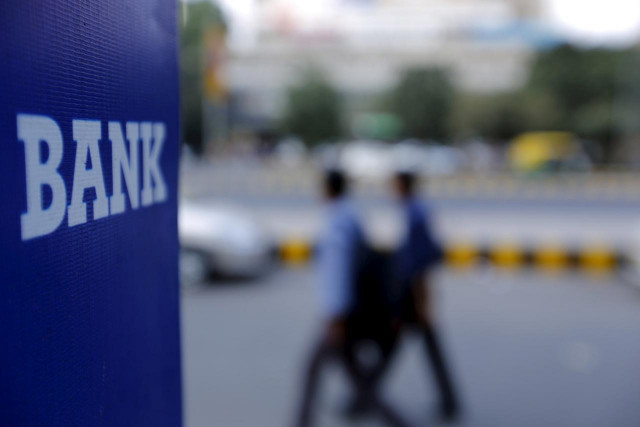
Commuters walk past a bank sign along a road. PHOTO: REUTERS
Corporate leaders are going to face a tough time as further tightening of the interest rate and economic slowdown may hit their profits.
“Economic slowdown and (multiple) interest rate hikes during 2018 may have weakened borrowers’ capacity to repay…many borrowers (including big businesses) may end up defaulting on payments,” Topline Securities’ analyst Syed Daniyal Adil told The Express Tribune.
Banking statistics suggest that interest rate hikes - by 275 basis points to 8.5% in the current calendar year 2018 - have caused a surge in losses to banks in the shape of higher non-performing loans (NPLs) and increased provisioning against bad debts.
NPLs, which stood at as low as 7.3% of total lending in 2006, peaked to 17.7% in 2011 as the central bank increased the benchmark interest rate from 7% in 2005 to 13.5% in 2011. The period saw interest rate peak at 14.5% in 2008 for a short span, according to data compiled by the State Bank of Pakistan (SBP), tradingeconomics.com and theglobaleconomy.com.
In absolute terms, the NPLs stood at Rs592 billion (17.7%) against total lending of Rs3.34 trillion by the banking sector in calendar year 2011.
Later, the central bank cut the interest rate to a four-decade low of 5.75% in 2016 and kept it there till January 2018 compared with 13.5% in 2011. The downward trend in the interest rate brought down NPLs to an 11-year low of 8.5% (or Rs624 billion) against total lending of Rs7.3 trillion in June 2018.
The lending comes to 38% of total assets of Rs19.2 trillion of all banks in Pakistan, according to the central bank.
Now, the banks are set to face higher NPLs as the SBP has increased the benchmark interest rate by 275 basis points in four rounds in the last 10 months to a near four-year high at 8.5%.
In addition to this, the anticipated slowdown in economic growth to 4.7-4.8% in the current fiscal year compared to the 13-year high growth of 5.8%, which was achieved last year, may result in businesses failing to progress, collapsing or becoming defaulters.
“As soon as the interest rate starts increasing, the cost of borrowing for businesses (both big and small) and people will rise. In this scenario, some businesses and people do have the capacity to continue paying off the debt, but many others may default,” Adil added.
Other losses
NPLs would be in addition to the recent losses of billions of rupees, particularly in the case of Habib Bank Limited (HBL) which paid a penalty of $225 million to the US and booked an additional cost of winding up its New York branch.
United Bank Limited (UBL) and MCB Bank borne an additional cost of paying increased pensions to retired employees after losing the case against them in courts.
Besides, National Bank of Pakistan (NBP), Silkbank, Sindh Bank and Summit Bank are estimated to have lent Rs35-40 billion to the Omni Group, which is no longer in a position to pay off the debt since its accounts have been frozen in an undergoing investigation linked with fake accounts.
Moreover, prolonged sluggish trading at the Pakistan Stock Exchange has also impacted bank earnings this year, the analyst said.
“Large banks - MCB, NBP, UBL and HBL have posted dismal performance for the quarter (July-September 2018) due to a number of reasons, which include slower growth in net interest income, higher provisions; both NPLs and impairment of investment and pension-related expenses,” he said.
His brokerage house has revised down earnings per share of major banks in the range of 14-32% to Rs9.6-15.3 for 2018.
It has also revised down earnings for the next two years (2019 and 2020). The analyst said the banking sector as a whole noted a drop in profits last year due to the reasons including the HBL penalty.
Silver lining
Adil said the impact of interest rate hikes was immediately seen on the cost side, while it made a positive impact on the earnings side with a lag of a few months.
Accordingly, the 275-basis-point hike this year would have left its negative impact on bank earnings as to these days while the positive impact would come in the time to come.
Banks have heavily invested Rs8.41 trillion in government long-term securities like Pakistan Investment Bonds (PIBs), short-term T-bills and other instruments as in June 2018. They would help them realise secured higher income.
The investment (Rs8.4 trillion) comes to 43.8% of the total assets at Rs19.2 trillion of the all the banks in Pakistan in June 2018.
Published in The Express Tribune, November 21st, 2018.
Like Business on Facebook, follow @TribuneBiz on Twitter to stay informed and join in the conversation.

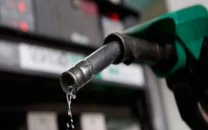
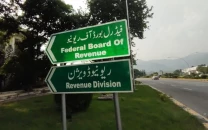
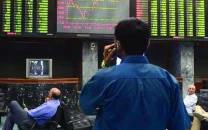


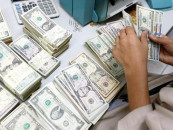


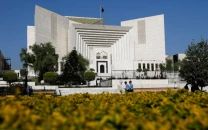
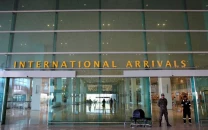
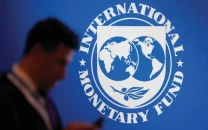






COMMENTS
Comments are moderated and generally will be posted if they are on-topic and not abusive.
For more information, please see our Comments FAQ